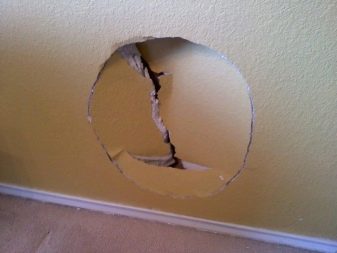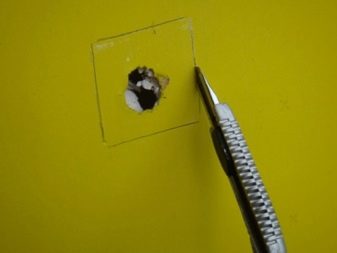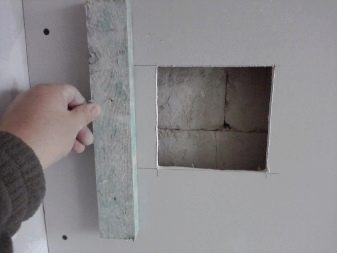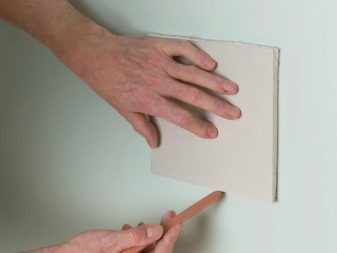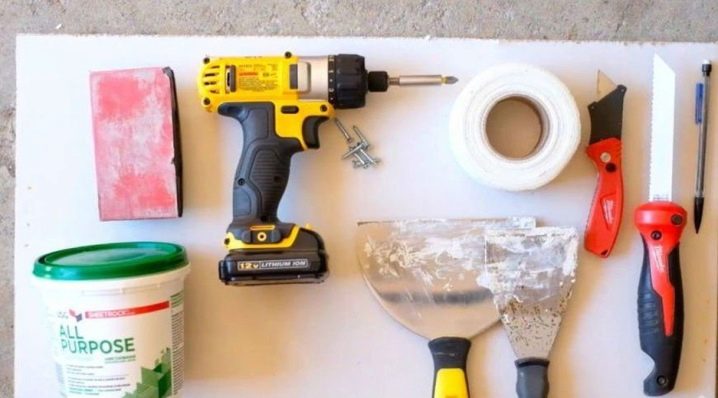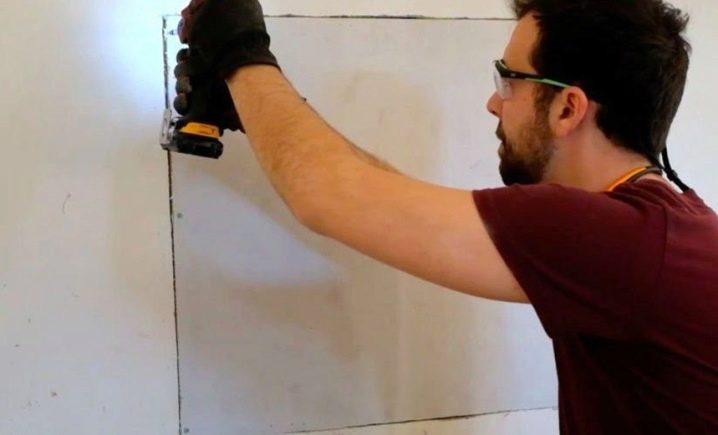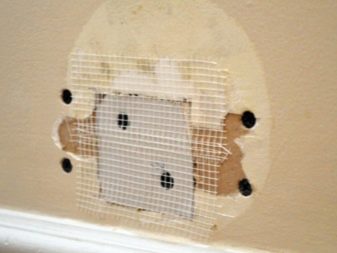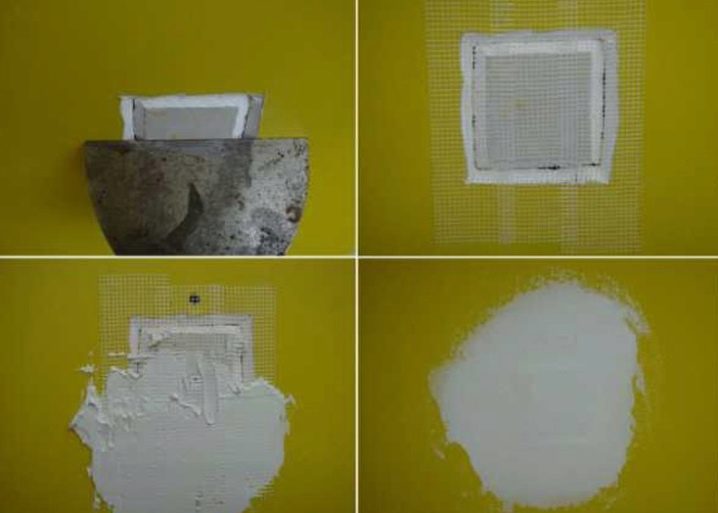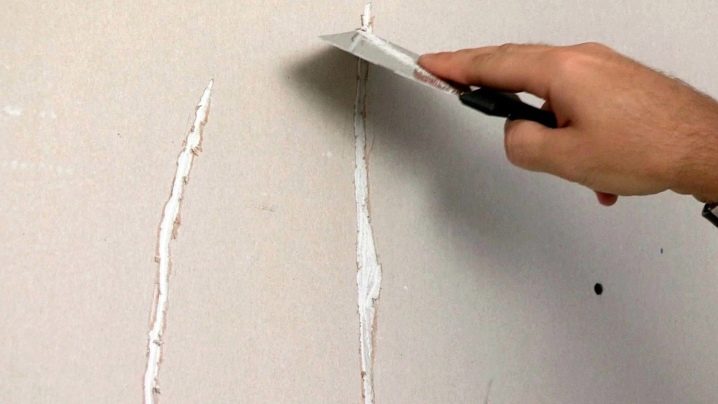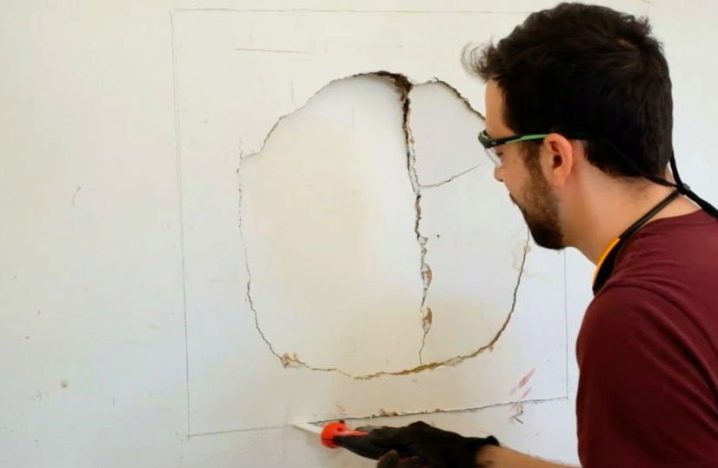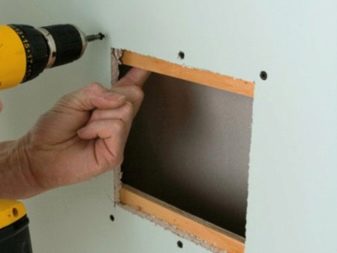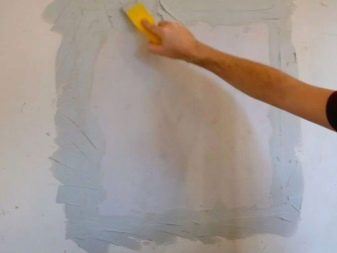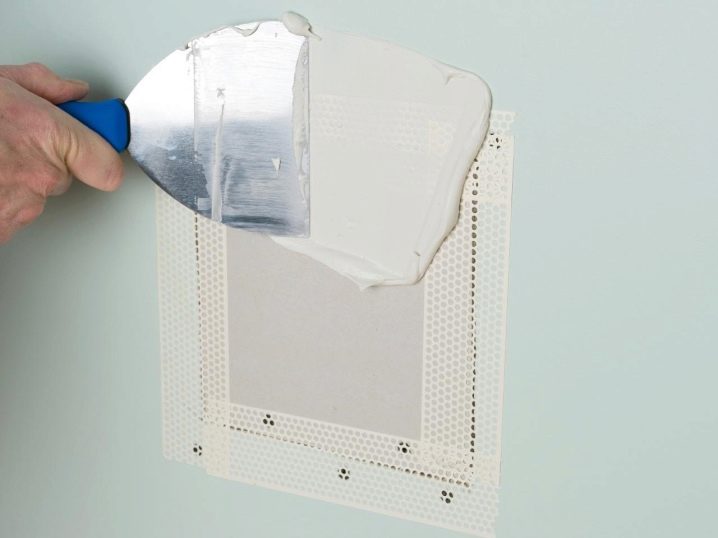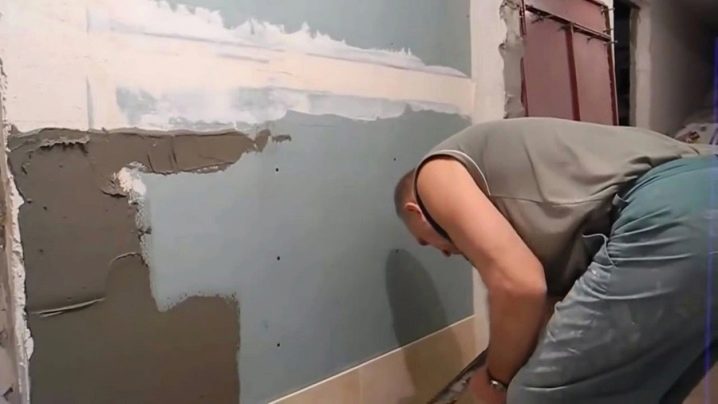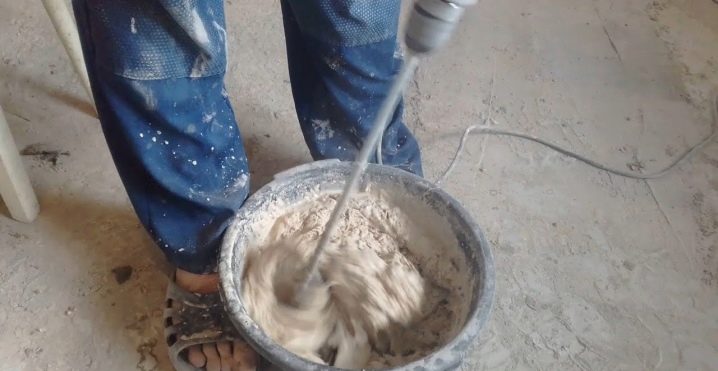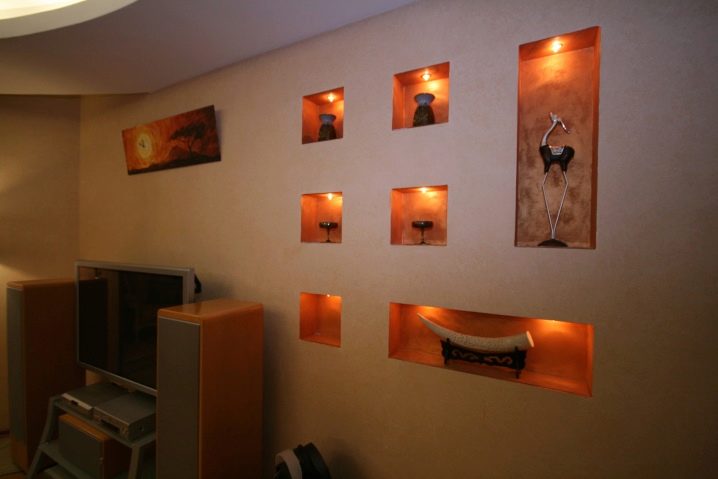How to fix a hole in drywall on the wall?
Virtually no modern repairs can not do without the use of drywall. This material is quite affordable, lightweight, easy to install, but, unfortunately, very fragile. If during or after the repair a hole appeared in the wall, then you should not worry. You can fill the hole in the wall of plasterboard, the main thing is to know how to do it correctly.
Preparatory stage
In order to seal a hole in drywall it is not necessary to have professional skills. Before starting a business, especially if it concerns repair, it is necessary to prepare for the process as thoroughly as possible. Good preparation is half the battle.
As a rule, a hole that unexpectedly formed in the wall requires some trimming and processing. This can be done with the help of the most ordinary knife, which is designed for construction work, or you can safely use a hacksaw.Choosing a hacksaw as a tool, we recommend taking a tool with fine teeth. This is usually a hacksaw. The smaller the teeth, the easier it will be to make the correct cut, the edges of which then do not have to be cleaned for a long time.
After the process of cutting edges require processing. This can be done with the same construction knife. You can also use a file that is designed for coarse processing. Small files are also suitable, but it is worth remembering that they will quickly become clogged with drywall dust and will work uncomfortably. Or you can use sandpaper.
Having completed the preparatory stage, namely, by preparing the hole itself for embedding, you need to decide what you will be patching the hole with. The ideal option is a piece of drywall. By the way, after repair, it is advisable not to throw out the remnants and trim. As you can see, they may well come in handy.
In addition, for the subsequent repair, namely for the repair of damage, you will need the following items: a simple pencil, ruler, construction knife, trowel, sandpaper, slats, screws, putty and drywall itself.
How to cope with damage?
Below are a few ways to help repair damaged plasterboard. You yourself will be able to choose the appropriate method, since much depends on the size of the damage in the drywall construction.
Minor defect
If a small hole with a diameter of no more than three centimeters has been formed, then it can be easily patched with putty. Of course, you need a putty, which is designed to work with drywall.
When you plant a putty, be sure to read the instructions on the package so that all proportions are met. As a rule, the dry mixture should be added to the prepared water, so it will be possible to achieve the perfect consistency, which resembles a thick sour cream.
On the prepared hole you need to stick the so-called serpyanka. Then a neat layer of putty is applied on top and everything is left until it is completely dry. The layer must be thin, since the procedure will have to be repeated three times to keep the whole structure well.
After you seal the hole with several layers of putty, and it is completely dry, the surface must be sanded so that there are no irregularities.You can do this with sandpaper. Then you can already paint the surface or glue the wallpaper.
It happens that small cracks form on the surface, which then may interfere with the overall finish. It is very easy to get rid of them. If the crack is small, you will have to deepen it a little, and then cover it with a putty, which we talked about above. After drying, do not forget about grinding.
In the event that a small chip has formed on the surface of the drywall, you can correct the situation with a plastering tape. Clean up the damage in advance, apply the tape, and from the top go with a putty.
Big hole
In the event that an impressive damage has been formed in the wall, the diameter of which is about or more than eight centimeters, the method described above will not work. To fix this problem, you need a "patch".
- Before you start making the patch itself, you need to prepare a hole. That is, cut it, giving a smooth rectangle shape. From all sides of the prepared hole you need to remove two centimeters of cardboard. This is necessary so that later the patch lies as tight as possible and there is no strong deformation of the wall, protuberances.
- Then you need to measure the hole, then transfer all the dimensions to a pre-prepared piece of drywall. Measure correctly, double-check, and only then cut the patch. It is important to remember that the patch itself must be at least five centimeters larger than the hole.
- After carefully cutting the patch, sand the edges as described above. Next, you need to cut it from the back so that it can be cut all the way to the plaster. And from the front there should be only a layer of the cardboard itself.
- Inside a hole prepared in the wall, you need to attach two small wooden bars. The bars must be fixed in such a way that their edges are not visible from the hole itself. That is, they should be fixed from the edge of the hole a centimeter two or three to the side. The bars should be fixed with screws. Bars should be located above and below, not on the sides.
- Next, put a layer of putty on the prepared patch and press it to the surface. The next stage can be called “camouflage”. In order to properly disguise the patch, you need to process all the joints with self-adhesive tape.Then on the patch itself apply another thin layer of putty. Having waited for full drying, all irregularities need to be processed an emery paper.
- You can also attach the patch with plaster, which should be applied to the edges of the prepared part. There is also another option when the patch is screwed with a drill to the installed bars.
- After the hole is sealed, you can finish the final finish, namely, cover the wall with plaster on top, paint the walls or glue the wallpaper.
Tips and tricks
If repairs are ahead, then our tips and recommendations will definitely come in handy:
- In order to cut off a flat piece of drywall, for example, for a patch, you first need to make even and deep cuts on the cardboard from both sides. After that, it is only necessary to press and break the plaster part.
- The patch can be of any shape: square, triangle or circle. The main thing to remember is that it should be easy to use and not create unnecessary problems.
- Be sure to use stainless steel screws, otherwise over time, rust spots may appear on the surface, which will spoil the overall appearance of the wall.
- The patch can be fixed not only with screws, but also with a special glue.
- If there are no wooden bars in the house, they can be completely replaced with plastic products, which can be fixed with glue.
- If damage to the wall of more than forty centimeters was formed, then you will have to replace a whole sheet of drywall. Unfortunately, in case of serious damage, no patches will save the situation.
- After the patch is installed in the wall, you should not paint only this, just repaired area, as fresh paint will stand out against the background. It is also very difficult to find the right shade.
- The solution, namely the putty, must be prepared correctly. Be sure to mix the solution with a drill in order to achieve a uniform consistency without any lumps.
- If the repair takes place in the bathroom, then it is necessary to use all materials, including mixtures, which are suitable for working indoors with high humidity.
- If a small hole on the wall was formed exactly in the place where you have long dreamed of hanging a picture or a family photo, then it is not necessary to patch it up.Favorite picture will help mask the hole in the wall and will delight you with its appearance.
How to seal the hole in drywall, see below in the video.


